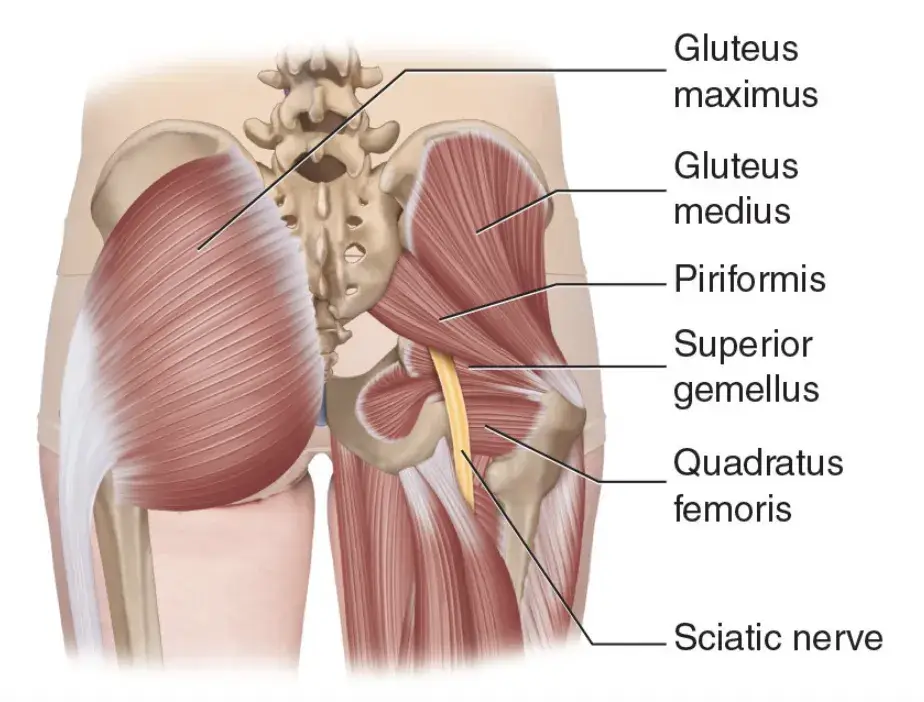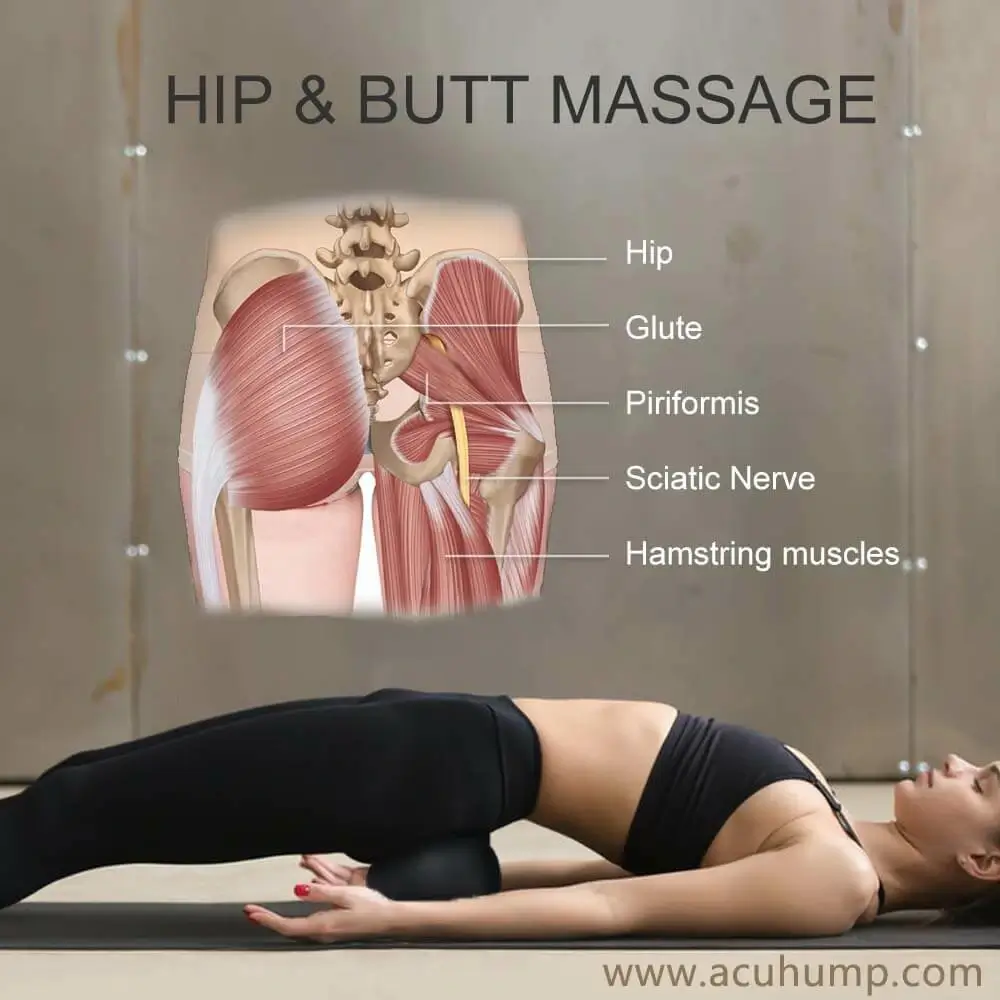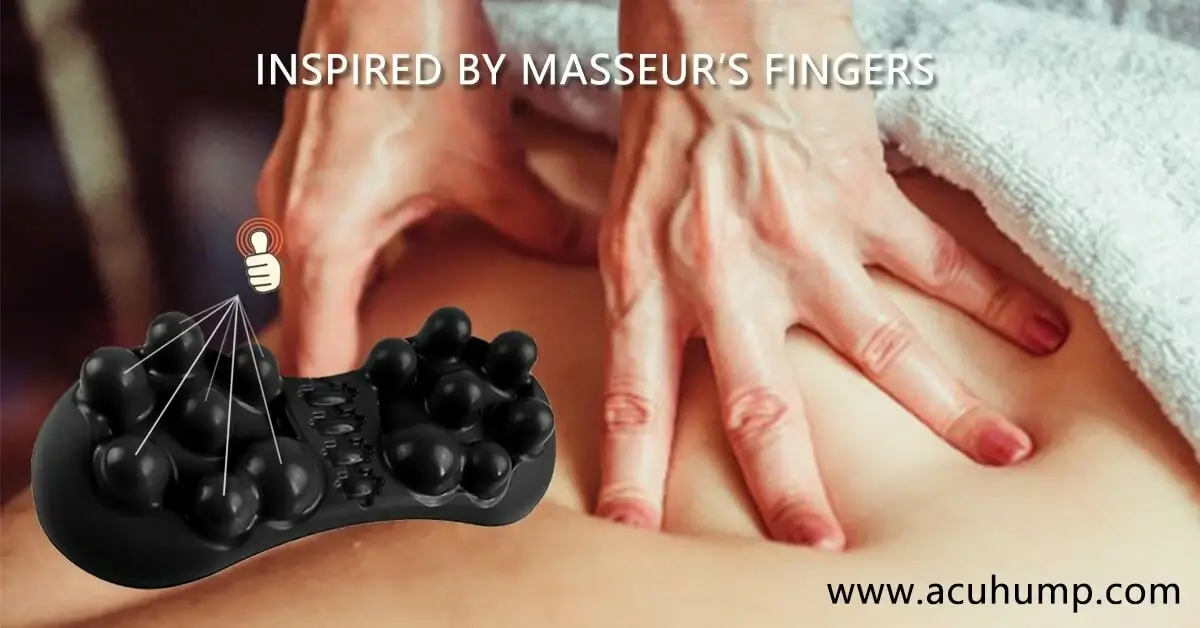Pain that originates from the gluteus maximus muscle and radiates down the leg can significantly impact daily activities and quality of life. Understanding the causes behind this type of pain is crucial for effective management and relief. This article delves into the intricacies of pain from the gluteus maximus muscle down the leg, exploring potential causes such as referred pain, sciatica, and muscle imbalances.

The gluteus maximus muscle and its role
The gluteus maximus muscle, often referred to as the “glutes,” is not only the largest muscle in the body but also one of the most powerful. Functionally, it is responsible for various movements and plays a crucial role in overall stability and mobility.
Actions of gluteus maximus
The gluteus maximus muscle acts as a prime mover in hip extension, meaning it contracts to help move the leg backward. This action is particularly important during activities such as walking, running, climbing stairs, or standing upright from a bent position. In addition, the gluteus maximus muscle assists in thigh rotation, allowing for smooth and controlled movement of the hip joint.
When the gluteus maximus muscle is strong and functioning properly, it helps to maintain proper alignment and stability of the pelvis. This, in turn, reduces the risk of injuries and excessive strain on other muscles and joints, such as the lower back, hips, knees, and even the ankles. In contrast, when the gluteus maximus muscle is weak or tight, it can disrupt the delicate balance of the musculoskeletal system.
Causes of gluteus maximus pain
Excessive tension in the gluteus maximus muscle often leads to discomfort and pain. The muscle may become tight due to prolonged sitting, sedentary lifestyles, or repetitive activities that keep the muscle in a shortened position. This tension can result in various symptoms, such as localized pain in the gluteal region or the referred pain that radiates down the leg.
On the other hand, weakness in the gluteus maximus muscle can lead to compensatory patterns and muscle imbalances. When the glutes are weak, other muscles, such as the hip flexors or lower back muscles, can become overactive and take on additional strain. This imbalance not only affects the functionality of the gluteus maximus muscle but also compromises the overall stability of the pelvis and lower body.
Ways to prevent
To prevent pain and discomfort associated with the gluteus maximus muscle, it is important to maintain its strength and flexibility. Engaging in regular exercises that target the glutes, such as squats, lunges, hip thrusts, and glute bridges, can help strengthen and tone the muscle. Additionally, incorporating stretches and mobility exercises specific to the gluteus maximus muscle can help release tension and maintain flexibility.

Referred pain and its connection to gluteus maximus
Referred pain is a phenomenon in which pain originating from one area is felt in another part of the body. In the case of the gluteus maximus muscle, dysfunction or tightness in this muscle can cause pain to radiate down the leg, mimicking symptoms commonly associated with sciatica. This occurs due to the interconnectedness of nerves and the brain’s interpretation of pain signals.
Sciatica and its relation to gluteus maximus
Sciatica is a condition characterized by the compression or irritation of the sciatic nerve, which runs from the lower back down to the legs. In some cases, a tight or inflamed gluteus maximus muscle can contribute to the development of sciatic-like symptoms. These symptoms may include pain, numbness, tingling, or a burning sensation that extends down the leg.
Muscle imbalances and their impact on gluteus maximus
Muscle imbalances can have a significant impact on the functioning of the gluteus maximus muscle and the overall stability of the body. When the gluteus maximus muscles are weak and underdeveloped, they are unable to provide adequate support and control during movement. On the other hand, overactive hip flexor muscles can become tight and overpowering, pulling the pelvis into an anterior tilt and causing disruption in the alignment of the hips.
Weak gluteus maximus muscles and overactive hip flexors often lead to an imbalance in the muscles surrounding the pelvis. This imbalance affects the distribution of forces and weight-bearing capacity, ultimately placing excessive strain on the gluteus maximus muscle. As a result, individuals may experience pain that radiates down the leg, commonly known as referred pain. This pain can be sharp, dull, or throbbing and may be accompanied by sensations of numbness or tingling.
The imbalance in muscle strength and function can also impact movement patterns. The gluteus maximus muscles, which should be responsible for hip extension and providing power during activities like walking or running, may be underutilized. Instead, the compensation from overactive hip flexors can cause the glutes to become further weakened, exacerbating the imbalance.
Impact from pelvic
Additionally, the disrupted alignment and stability of the pelvis can affect other areas of the body, such as the lower back and knees. The gluteus maximus muscle, when functioning optimally, helps to support the lower back and maintain proper alignment. However, muscle imbalances can lead to increased stress on the lower back, potentially resulting in discomfort and pain. The altered mechanics in the hips can also affect the knees, as misalignment can put excessive strain on the joint.
Addressing muscle imbalances is crucial for relieving pain and restoring proper function. This involves a combination of exercises to strengthen the gluteus maximus muscles while lengthening and releasing tension in the tight hip flexors. Engaging in targeted exercises, such as glute activation drills, hip extension exercises, and stretching routines, can help rebalance muscle strength and promote proper alignment. It is also important to address any underlying postural issues or movement patterns that contribute to the imbalances.
Diagnosis and management of pain from gluteus maximus down leg
In the diagnosis and management of pain from the gluteus maximus down the leg, healthcare professionals play a crucial role. A comprehensive evaluation is necessary to determine the underlying cause of the pain accurately. This evaluation often starts with a physical examination, during which the healthcare professional assesses the affected area, checks for any muscle imbalances or abnormalities, and observes the range of motion and flexibility.
To further support the diagnosis, imaging tests like X-rays or MRIs may be employed to provide a more detailed view of the structures involved, including the gluteus maximus muscle, nerves, and surrounding tissues. These tests can help identify any structural abnormalities or potential sources of pain.
Muscle strength assessment
Muscle strength assessments are also essential to evaluate the function of the gluteus maximus muscle and detect any imbalances. Through testing various movements and activities, healthcare professionals can identify weaknesses in the glutes and other related muscles, such as the hip flexors or core muscles. This information is essential for tailoring an effective treatment plan.
Management options for pain from the gluteus maximus down the leg often involve a combination of approaches. Physical therapy is a common and highly effective treatment modality. Physical therapists can work with individuals to develop a personalized program that includes guided stretching exercises targeting the gluteus maximus muscle, as well as the surrounding muscles.
Self Massage Glute
The Acu-hump can be a glute massager in the management of pain from the gluteus maximus down the leg. Its unique design allows for targeted pressure application to the affected area, facilitating myofascial release and easing muscle tension. By utilizing the Acu-hump during massage sessions, individuals can specifically address the gluteus maximus muscle, promoting relaxation and relieving pain.

Acu-hump® Release Gluteus Maximus
In addition to massage, the Acu-hump can also serve as a stretching aid. Its shape and design allow for effective stretching of the gluteus maximus muscle, facilitating its flexibility and releasing tightness. This combination of massage and stretching can provide significant relief and help manage pain associated with gluteus maximus-related discomfort.

Acu-hump: 30-day return policy. No risk for you.
Furthermore, pain management techniques may be incorporated into the treatment plan. This can include modalities such as heat or cold therapy, electrical stimulation, or non-steroidal anti-inflammatory drugs (NSAIDs) to manage pain and reduce inflammation.
Pain originating from the gluteus maximus muscle and radiating down the leg can significantly impact individuals’ daily lives. By understanding the causes behind this type of pain – such as referred pain, sciatica, and muscular imbalances – individuals can seek appropriate management strategies. Seeking professional medical advice is crucial for accurate diagnosis and tailored treatment plans. With the right approach, including loosen buttock muscles imbalances and engaging in targeted exercises, relief can be achieved. By regaining mobility, individuals can improve their overall well-being and continue to pursue their daily activities with increased comfort and functionality.
